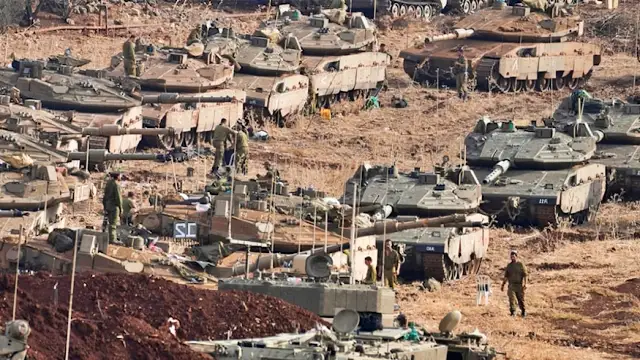The situation at the Lebanese-Israeli border is heating up. Recent reports indicate that Hezbollah, the Islamic Resistance in Lebanon, is delivering heavy blows to Israeli forces. This article explores the latest developments in this ongoing conflict, highlighting a significant ambush that has left Israeli troops reeling.
A Planned Ambush
On Wednesday morning, sources from the Resistance revealed that Hezbollah fighters executed a well-planned ambush against an elite Israeli unit in the Odeisseh region of South Lebanon. The ambush resulted in substantial casualties among Israeli soldiers.
According to reports, Hezbollah fighters had been closely monitoring Israeli reconnaissance troops. In the early hours of Tuesday, they observed the Israeli forces moving through a less-traveled area. Instead of engaging immediately, the Resistance fighters chose to wait. They allowed the Israeli troops to complete their reconnaissance mission, setting the stage for a more effective strike later.
Setting the Trap
Based on their observations, the Resistance fighters prepared a strategic ambush in the al-Mahafer/Odeisseh area. They selected a location within a house, which provided them with a tactical advantage.
At dawn on Wednesday, over 30 Israeli soldiers and officers advanced silently into the ambush zone. Unaware of the trap, they moved closer to the Resistance’s position. Once they were in the designated area, the fighters initiated the ambush with the phrase, “At your service, Nasrallah.”
The Attack Unfolds
The ambush erupted with heavy gunfire and rocket-propelled grenades (RPGs). Hezbollah fighters engaged the Israeli soldiers at close range, leading to significant casualties. Eyewitnesses reported hearing the cries of wounded soldiers echoing through the area.
As the ambush continued, a nearby support group from Hezbollah targeted Israeli supply lines. This secondary operation aimed to prevent reinforcements from reaching the trapped Israeli forces. Artillery shells and rockets struck settlements like Misgav Am, Kfar Giladi, and Metulla, further complicating Israeli efforts to assist their troops.
Israeli Response
In response to the escalating situation, the Israeli Air Force deployed helicopters to provide cover fire and assist in evacuating casualties. Israeli troops used smoke grenades to obscure their movements, attempting to retreat while recovering their wounded soldiers.
Field sources reported that Hezbollah fighters promised their leader, Sayyed Hassan Nasrallah, and the people of Lebanon that they would continue their mission. They reaffirmed their commitment to defending Lebanese territory, following the plans laid out by their fallen leaders.
A Warning to Israel
Hezbollah declared that the ambush was just a glimpse of what could happen if Israeli forces attempted to advance further into South Lebanon. They warned that more intense confrontations were on the horizon and that every inch of South Lebanon would be fiercely defended.
“The days, nights, and battlefield will show this enemy who we are,” the Resistance stated, vowing to instill fear in the hearts of those who threaten Lebanese sovereignty.
Israeli Acknowledgment of Losses
On Wednesday, Israeli forces admitted to suffering losses during the confrontations. Reports confirmed the deaths of eight Israeli soldiers, including two captains. Israeli Channel 12 noted that these soldiers fell in two separate locations during close encounters with Hezbollah fighters.
Additionally, five soldiers from the Egoz Commando Unit, including one officer, were reported wounded. As the situation escalated, Israeli Army Radio revealed that a unit of commandos encountered Hezbollah fighters inside a building in a southern Lebanese village.
Continued Conflict
As the evacuation of Israeli soldiers was underway, Hezbollah fighters continued to launch mortar shells. A medical evacuation unit was called to treat the wounded on the field. Reports indicated that Israeli military reinforcements stationed in Aita al-Shaab came under fire from Hezbollah rockets.
Moreover, Hezbollah claimed to have destroyed three Israeli Merkava tanks using guided missiles as they advanced toward the town of Maroun al-Ras.
Casualty Reports
A field source from the Lebanese Resistance reported that the ongoing confrontations resulted in the deaths and injuries of over 80 Israeli soldiers and officers, with nearly five tanks destroyed. This significant toll highlights the intensity of the conflict and the effectiveness of Hezbollah’s operations.
Conclusion
The conflict at the Lebanese-Israeli border is far from over. Hezbollah’s recent ambush has demonstrated their capability to inflict serious damage on Israeli forces. As tensions continue to rise, both sides are preparing for what may come next. The situation remains fluid, and the world watches closely as events unfold in this volatile region.

